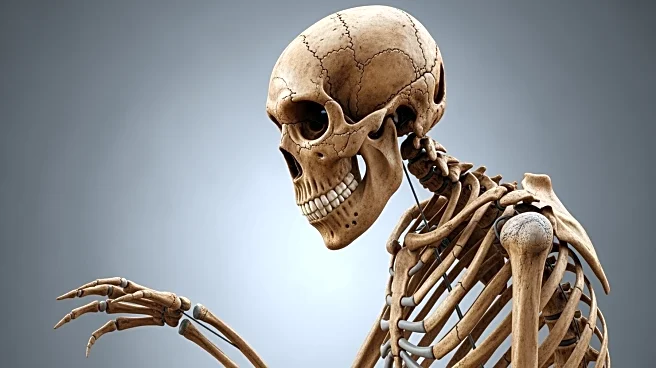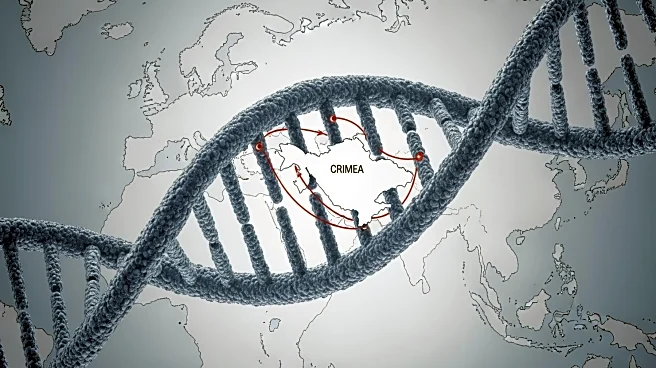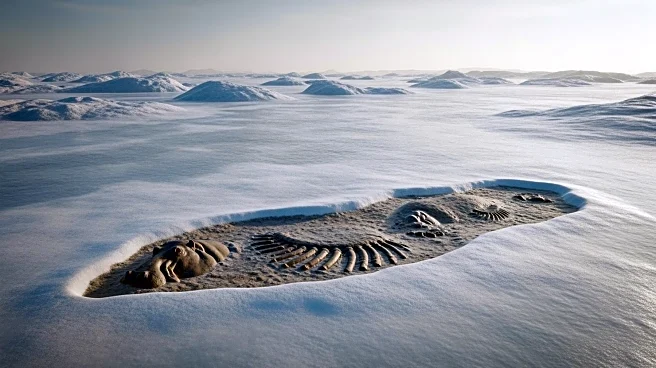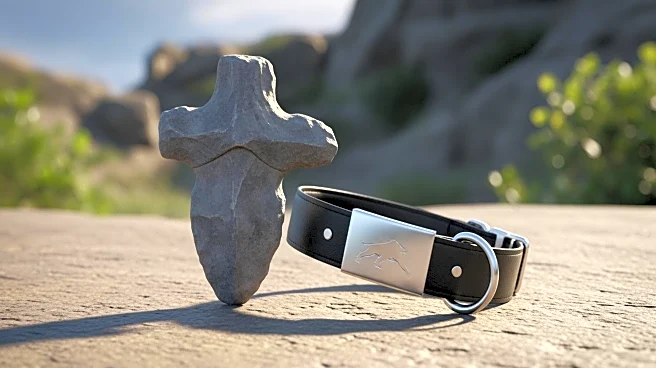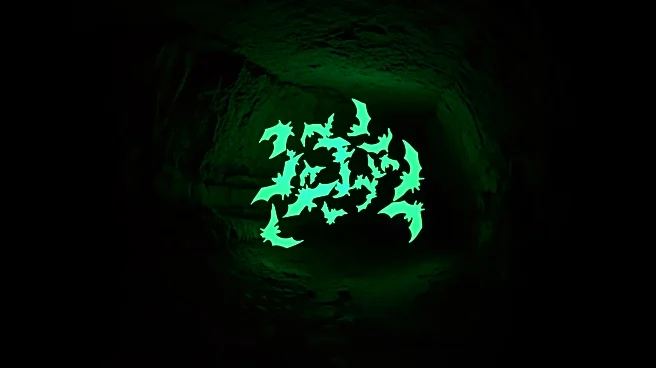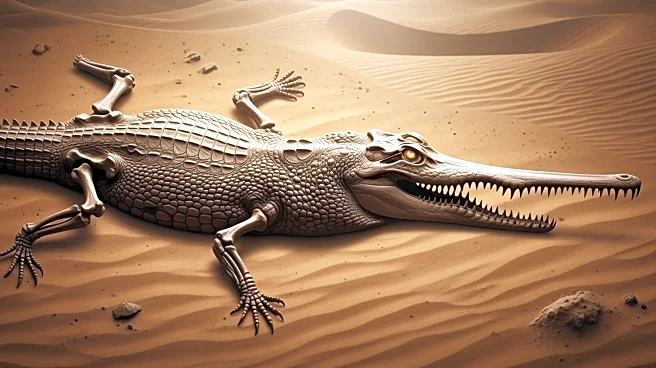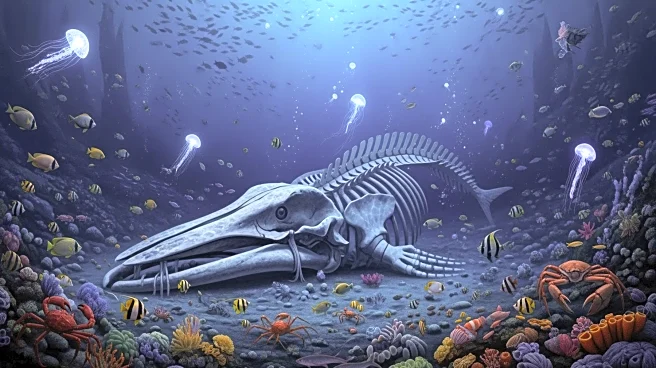What's Happening?
A research team led by biological anthropologist Thomas Prang from Washington University in St. Louis has been studying Ardi, a 4.4-million-year-old female skeleton belonging to the species Ardipithecus
ramidus. Ardi, unearthed in the Ethiopian desert in 1994, is the oldest known partial hominin skeleton. The study, recently published in Communications Biology, reveals that Ardi was capable of walking upright while retaining features for grasping, indicative of her transition from vertical climbing to bipedal walking. The research focuses on Ardi's talus, a bone in the ankle, which shows a mix of primitive and modern features, suggesting adaptations for bipedalism. This discovery challenges previous models of human origins, proposing that humans evolved from an African ape-like ancestor rather than a generalized arboreal ape.
Why It's Important?
The findings from Ardi's skeleton provide crucial insights into the evolutionary path that led to modern humans. Understanding the transition from tree-dwelling to bipedalism is significant for comprehending how early hominins adapted to terrestrial life. This research impacts the scientific community's perspective on human evolution, potentially reshaping theories about the last common ancestor of humans and chimpanzees. The study highlights the complexity of evolutionary adaptations and the gradual shift towards bipedalism, which is a defining characteristic of humans. These insights contribute to the broader understanding of human origins and the evolutionary processes that distinguish humans from other primates.
What's Next?
Further research is likely to focus on comparing Ardi's skeletal features with other hominin fossils to refine the understanding of human evolution. Scientists may explore additional fossil evidence to corroborate the findings and expand knowledge on the evolutionary timeline. The study may prompt new investigations into the environmental and ecological factors that influenced the transition to bipedalism. As the scientific community digests these findings, discussions and debates on human evolutionary models are expected to continue, potentially leading to revised theories and new research directions.
Beyond the Headlines
The study of Ardi's skeleton not only sheds light on human evolution but also raises questions about the ethical considerations in paleoanthropology. The excavation and analysis of ancient remains involve cultural sensitivity, especially when dealing with fossils from regions with rich historical significance. Additionally, the research underscores the importance of interdisciplinary collaboration in uncovering evolutionary history, combining fields such as anthropology, biology, and archaeology to piece together the complex puzzle of human origins.
